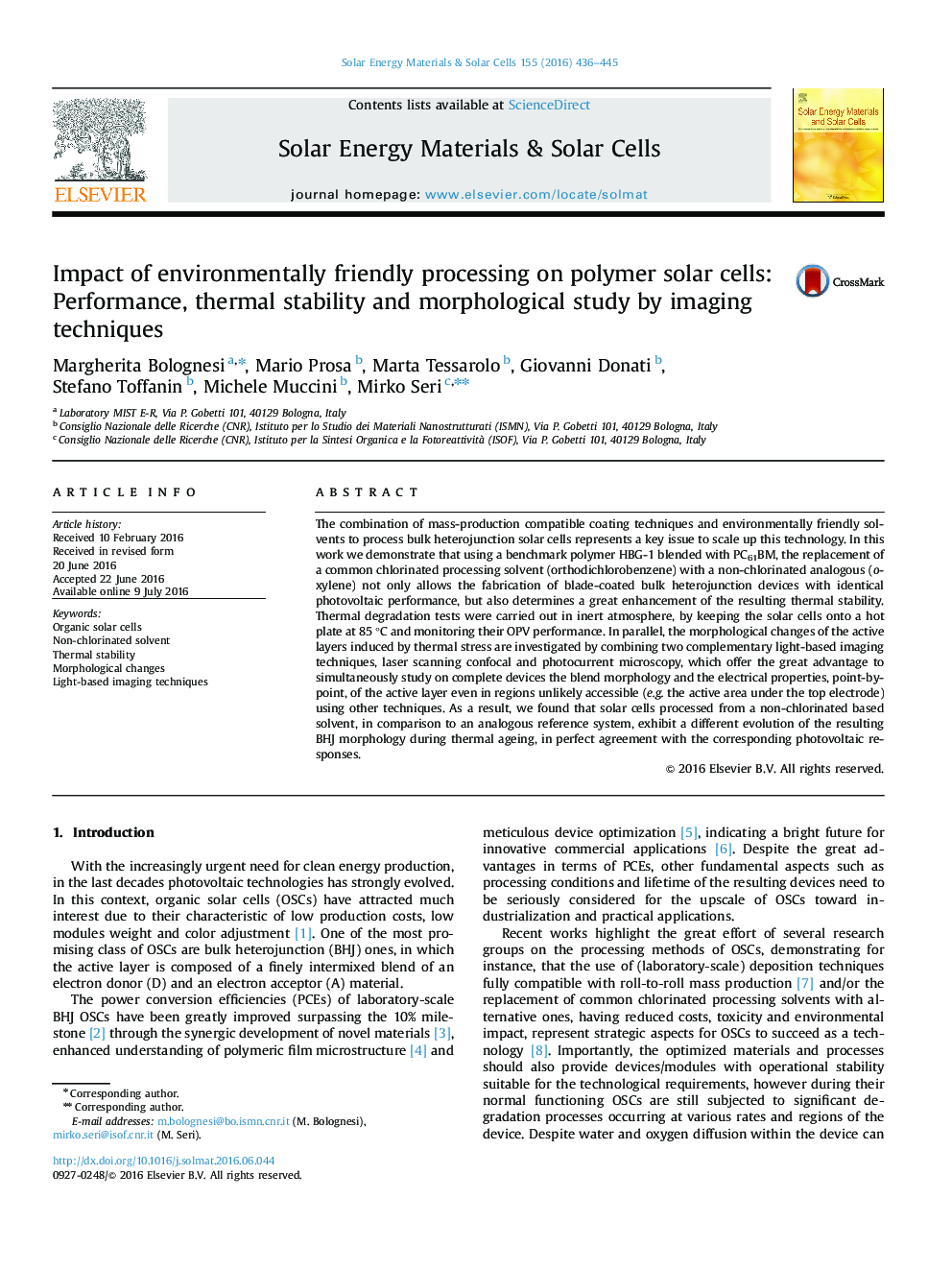| کد مقاله | کد نشریه | سال انتشار | مقاله انگلیسی | نسخه تمام متن |
|---|---|---|---|---|
| 77532 | 49283 | 2016 | 10 صفحه PDF | دانلود رایگان |
• Environmentally friendly solvents to process BHJ devices.
• Blade-coated BHJ solar cells fabricated in ambient conditions.
• Impact of the processing solvent on the thermal stability of the resulting BHJ device.
• Local investigation of the morphological and electrical properties using light-based imaging techniques.
The combination of mass-production compatible coating techniques and environmentally friendly solvents to process bulk heterojunction solar cells represents a key issue to scale up this technology. In this work we demonstrate that using a benchmark polymer HBG-1 blended with PC61BM, the replacement of a common chlorinated processing solvent (orthodichlorobenzene) with a non-chlorinated analogous (o-xylene) not only allows the fabrication of blade-coated bulk heterojunction devices with identical photovoltaic performance, but also determines a great enhancement of the resulting thermal stability. Thermal degradation tests were carried out in inert atmosphere, by keeping the solar cells onto a hot plate at 85 °C and monitoring their OPV performance. In parallel, the morphological changes of the active layers induced by thermal stress are investigated by combining two complementary light-based imaging techniques, laser scanning confocal and photocurrent microscopy, which offer the great advantage to simultaneously study on complete devices the blend morphology and the electrical properties, point-by-point, of the active layer even in regions unlikely accessible (e.g. the active area under the top electrode) using other techniques. As a result, we found that solar cells processed from a non-chlorinated based solvent, in comparison to an analogous reference system, exhibit a different evolution of the resulting BHJ morphology during thermal ageing, in perfect agreement with the corresponding photovoltaic responses.
Figure optionsDownload as PowerPoint slide
Journal: Solar Energy Materials and Solar Cells - Volume 155, October 2016, Pages 436–445
